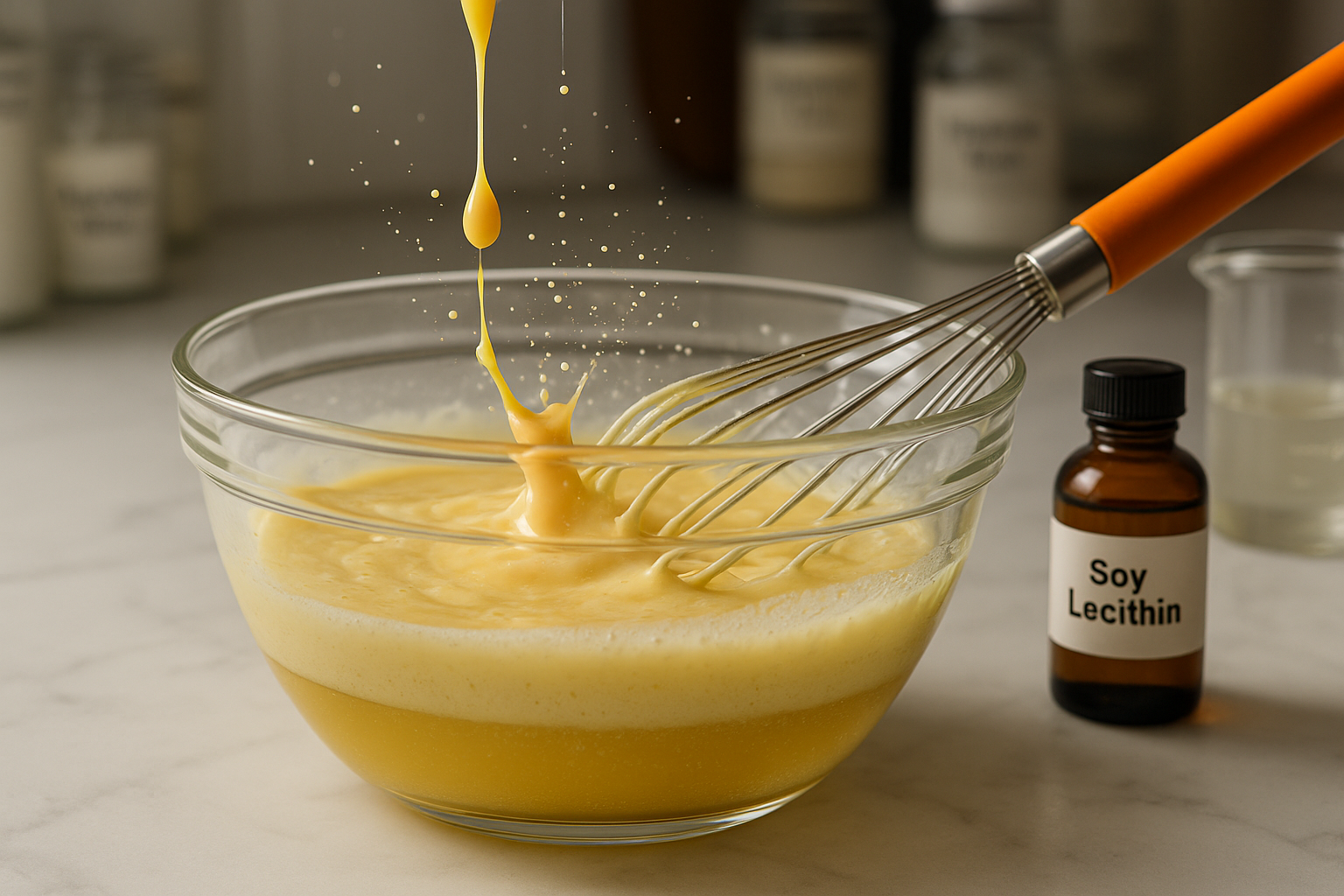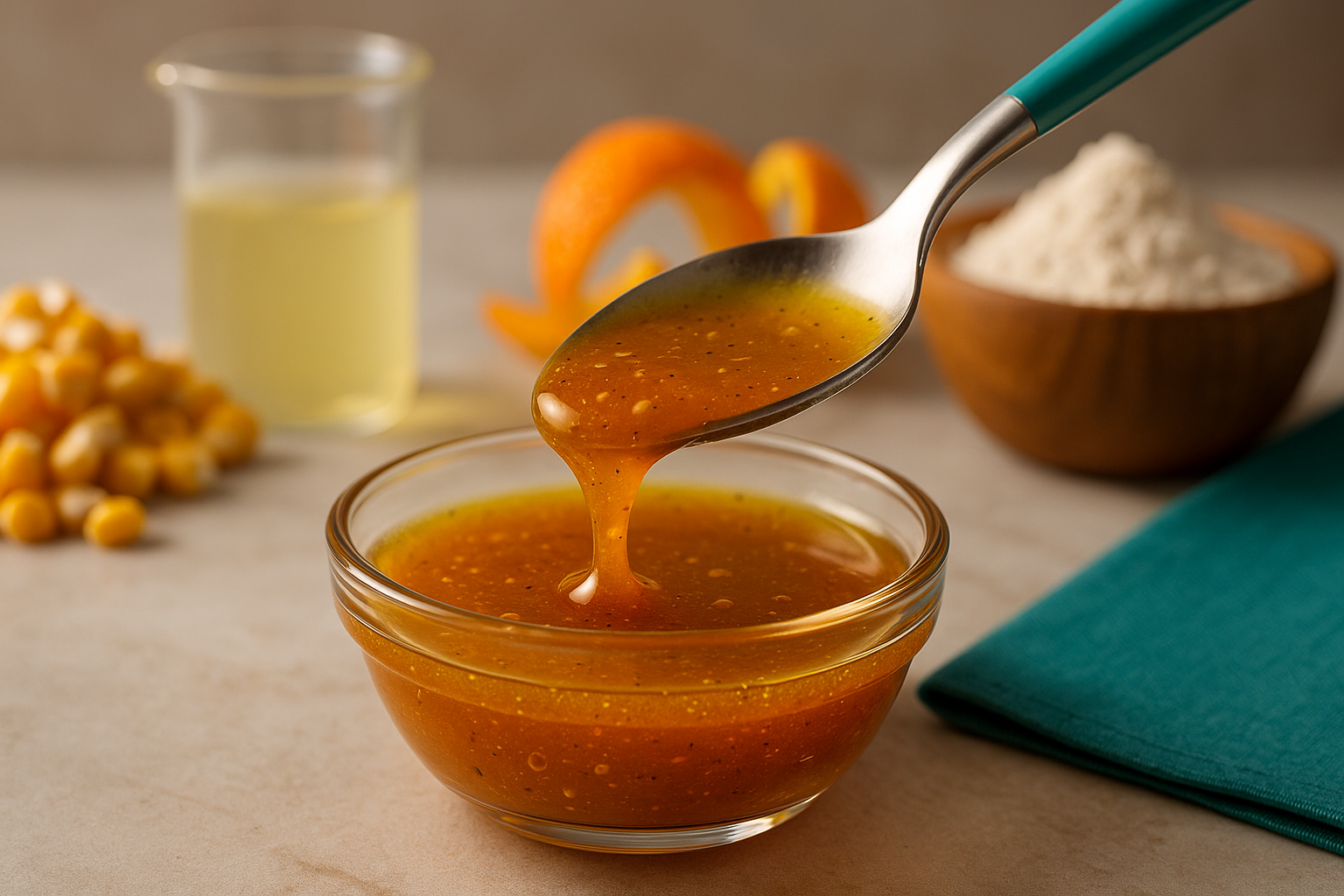
How to Bake Softer Breads
SUBSCRIBE TO OUR BLOG
Promotions, new products, and recipes.
If you love the soft, pillowy texture of freshly baked bread, you're in the right place. In this section, we'll share with you the secrets to baking softer breads at home. Whether you're an experienced bread maker or just starting out, these tips and techniques will help you achieve that perfect soft texture you crave.
From understanding the factors that influence bread texture to adding fat to your dough, we'll explore a variety of methods to help you achieve your desired results. So, let's get started!
Key Takeaways:
- Understanding the factors that influence bread texture is crucial to achieving a soft texture.
- Adding fat to your dough can help soften it, but the type of fat you use matters.
- Protein and sugars can enhance browning and create an inviting appearance for your loaves.
- Liquid sugars and syrups can contribute to a softer texture and a more uniform sweetness.
- Sodium stearoyl lactylate is a common softening agent used in bread making.
Understanding Bread Texture
Before we dive into the techniques for baking softer breads, let's understand the factors that influence bread texture. Bread texture is affected by various ingredients and techniques that can change the interior and exterior of the loaf.
Soft Interiors vs Crusty Exteriors
The interior of bread is affected by the amount of liquid in the dough and the amount of time it is allowed to rise. A moist dough will result in a more open crumb and a softer texture. On the other hand, the exterior of bread is affected by the temperature at which it is baked and the presence of steam in the oven. High temperatures and steam will result in a crusty exterior.
Ingredients that Change the Texture
Adding fat to the dough will result in a softer texture as it interferes with the formation of gluten. Gluten is a protein that gives bread its structure, but too much can result in a tough texture. Sugar, particularly liquid sugars, can enhance browning and create a softer crust.
"When it comes to texture, it is important to consider the balance between the interior and exterior of the bread. Understanding the role of different ingredients and techniques can help achieve the desired texture for your bread."
Adding Fat to Soften Bread
One of the easiest ways to achieve a softer bread is by adding fat to the dough. But not all fats are created equal, and understanding the differences will help you achieve the desired results.
When adding fat to bread dough, it's essential to consider whether you'll be using liquid fats or solid fats. Liquid fats, such as vegetable oil or melted butter, are excellent for creating a softer texture. When using liquid fats, the bread will retain its softness for a more extended period because the fats help to lubricate the gluten strands, minimizing toughness.
Tip: Use liquid fats to add moisture to your dough without affecting the gluten's structure.
On the other hand, using solid fats like butter and shortening will also soften the bread. However, they will harden as the bread cools, resulting in a shorter shelf life for softer bread.
When using solid fats, it's important to remember to bring the butter or shortening to room temperature before incorporating it into the dough. That way, it will be easier to mix and distribute throughout the dough.
Tip: When using solid fats, cut them into small pieces and let them sit at room temperature for thirty minutes before adding them to the dough.
How to Add Fat to Bread Dough
To add fat to your bread dough, follow these simple steps:
- Melt the butter or warm the liquid fat, depending on what you're using
- Add the fat to your dough during the initial mixing process, just before kneading
- Incorporate the fat thoroughly into the dough to ensure an even distribution

Adding fat to your bread dough is an easy way to achieve a softer texture. Whether using liquid or solid fat, it's important to understand how each affects the dough and the bread's shelf life. Incorporate fat into your dough carefully, and you'll be rewarded with delightfully soft loaves every time.
Enhancing Browning with Protein and Sugars
If you're a bread lover, you know that the golden-brown crust is just as important as the soft, fluffy crumb. Achieving that perfect browning effect can be challenging, but adding protein and sugars to your dough can help.
When bread is baked, the amino acids in the dough's proteins react with the sugars present to create a Maillard reaction, resulting in that coveted golden-brown color. Adding more protein and sugar to your dough will create a darker and more uniform crust.
Tip: Replace granular sugars with liquid sugars for a more even distribution and a sweeter flavor.
"In addition to improving browning, added sugar can also contribute to the bread's overall texture, creating a softer crumb."
| Ingredient | Amount | Effect on Browning |
|---|---|---|
| Granulated Sugar | 1/4 cup | Light Golden-Brown |
| Honey | 1/4 cup | Medium Golden-Brown |
| Molasses | 1/4 cup | Dark Golden-Brown |
Incorporating protein into your dough can also enhance browning. Consider adding ingredients like milk, eggs, or whey protein powder to your recipe for a darker crust.
The key to achieving perfectly browned bread is finding the right balance between sugar and protein. Experiment with different amounts and types of sugar and protein to see what works best for you and your recipe.
Using Liquid Sugars and Syrups
When it comes to achieving that soft texture in bread, replacing granular sugars with liquid sugars can make a significant difference. Not only do they contribute to the texture, but they also provide a more uniform sweetness throughout the bread.
One option to consider is glucose syrup, which is a thick, sweet syrup made from cornstarch. It's commonly used in the production of bakery products because it helps retain moisture and creates a soft texture in the final product. In bread-making, glucose syrup can be used instead of granular sugar in the dough, resulting in a softer crumb.
Invert sugars are another option to consider. They're a mixture of glucose and fructose that are created by splitting sucrose (table sugar) into its component parts. Invert sugars are more hygroscopic than granular sugar, meaning they attract and hold more moisture. This can result in a softer texture and a longer shelf life for your bread.
| Liquid Sugar/Syrup | Texture Benefits | Usage Rate |
|---|---|---|
| Glucose Syrup | Retains moisture, creates soft texture | Replace granular sugar with equal amount |
| Invert Sugar | More hygroscopic, attracts and holds moisture | Replace granular sugar with equal amount, or use 10-20% less invert sugar |
Using liquid sugars and syrups can take some experimentation to perfect, but the results are worth it. Incorporating them into your bread-making process can help create a soft, pillowy texture that will have you craving more.
Sodium Stearoyl Lactylate: A Softening Agent
Sodium stearoyl lactylate is a widely used ingredient in the commercial baking industry to improve the texture and shelf life of baked goods. This versatile ingredient is especially useful for creating softer, more tender bread.
Sodium stearoyl lactylate is a food additive derived from lactylated fatty acids and stearic acid. It is commonly used as a dough conditioner, emulsifier, and whipping agent, and is considered safe for consumption by the FDA.
One of the main benefits of using sodium stearoyl lactylate in bread-making is its ability to strengthen the gluten network, which results in a softer, more uniform crumb. It also helps to retain moisture in the bread, preventing it from becoming dry and crumbly.
When using sodium stearoyl lactylate in your bread recipe, it is important to follow the recommended usage levels. Typically, 0.5-1% of the flour weight is added, depending on the desired texture and volume of the bread.
If you are looking to create a softer, more tender bread, consider incorporating sodium stearoyl lactylate into your recipe. With its numerous benefits and proven track record, it is a reliable ingredient that can help take your bread-making skills to the next level.
"Sodium stearoyl lactylate is a multipurpose food additive that can be used to improve the texture and shelf life of baked goods."
The 5% Oil Rule for Softer Breads
Want to achieve that pillowy-soft texture in your bread? Follow the 5% oil rule! This simple technique involves adding 5% oil of the total bread weight to your recipe.
The oil plays a crucial role in enhancing the softness of your bread. It helps to keep the dough moist, resulting in a softer crumb. Plus, the added fat contributes to a richer flavor and a more tender texture.
To calculate the amount of oil needed for your recipe, simply multiply the total weight of your flour and other dry ingredients by 0.05. For example, if your recipe calls for 1000g of flour and other dry ingredients, you would need to add 50g of oil.

Tips for Using the 5% Oil Rule
When using the 5% oil rule, it's important to keep in mind a few tips:
- Use a neutral-flavored oil to avoid overwhelming the taste of the bread.
- Add the oil gradually, mixing well after each addition.
- Be sure to adjust the amount of water in your recipe to account for the added oil.
Whether you're making a classic white bread or a rustic sourdough, the 5% oil rule can help you achieve that soft, fluffy texture we all love. Give it a try and see the difference it can make in your baking.
Other Tips and Tricks for Softer Breads
Besides using the techniques we've already discussed, there are a few additional tips and tricks that can help you achieve that perfect soft texture in your breads.
Avoid Bitter Fats
When adding fat to your dough, be sure to avoid using bitter fats, such as olive oil. These fats can negatively affect the flavor of your bread and overpower the other ingredients. Instead, choose a neutral-flavored oil or butter for the best results.
Beware of Solid Fats
While adding fat can help soften your bread, it's important to remember that solid fats will also become solid when cooled. This can create a denser texture in your finished loaf. If you choose to use a solid fat, such as shortening, be sure to use it sparingly and in combination with a liquid fat to maintain a softer texture.
Knead the Dough Thoroughly
Properly kneaded dough can make all the difference in the texture of your bread. Kneading helps to develop the gluten in the dough, resulting in a softer, more elastic texture. Be sure to knead your dough thoroughly for best results.
Use Milk or Yogurt
For an extra-soft texture, consider using milk or yogurt in place of water in your bread recipe. The added fat and protein in these dairy products can contribute to a softer, more tender crumb.
Try a Bread Improver
If you're still struggling to achieve the soft texture you're after, consider using a bread improver. These products are designed to enhance the texture, volume, and flavor of your bread. Look for a bread improver that contains enzymes and emulsifiers for best results.
Experiment with Different Flours
Finally, don't be afraid to experiment with different types of flour to achieve the texture you desire. Some flours, such as cake flour, are naturally softer than others and can help create a tender crumb in your bread. You can also try blending different types of flour to create a custom blend that meets your specific needs.
Conclusion: Secrets to Baking Softer Breads
Mastering the art of baking softer breads is not rocket science. It simply requires patience, practice, and the right techniques. With the knowledge gained from this article, you can now confidently bake bread with a soft and delightful texture that will impress anyone who takes a bite.
Softer Breads: Elevating Your Skills
By understanding the factors that influence bread texture, such as using liquid fats and sugar syrups, adding sodium stearoyl lactylate as a softening agent, and following the 5% oil rule, you can create bread with a soft texture that will have your family and friends asking for more.
Secrets to Success
Remember to avoid using bitter fats, to use liquid fats rather than solid fats, and to consider how solid fats behave when cooled. These tips, along with the techniques discussed in this article, will take your bread-making skills to the next level and give you the satisfaction of biting into a perfectly soft loaf of bread.
Bake On!
So go ahead, put your skills to the test, and enjoy the satisfaction of baking the perfect loaf of bread with a soft and delightful texture. With these secrets to baking softer breads, you'll be able to impress anyone who takes a bite. Happy baking!
FAQ
How can I achieve a softer bread texture?
To achieve a softer bread texture, there are several techniques you can try. Adding fat to the dough, using liquid sugars and syrups, enhancing browning with protein and sugars, and incorporating softening agents like sodium stearoyl lactylate can all contribute to a softer bread texture.
What role does fat play in softening bread?
Fat can help soften bread by adding moisture and tenderness to the dough. Liquid fats, like oils, can be easily incorporated into the dough, while solid fats should be melted before mixing. However, it's important to note that using too much fat can result in a greasy texture, so it's best to follow a recipe's guidelines.
How can I enhance the browning of my bread?
If you're looking to achieve a golden-brown crust on your bread, you can enhance browning by adding protein and sugars. Protein-rich ingredients like milk, eggs, or egg wash can contribute to browning, while sugars will caramelize during baking, creating a beautiful crust. Consider using liquid sugars or syrups instead of granular sugars for a more even browning effect.
What are the benefits of using liquid sugars and syrups?
Liquid sugars and syrups offer several benefits when making bread. They are easier to incorporate into the dough, provide consistent sweetness, and can contribute to a softer texture. Glucose syrup and invert sugars are commonly used liquid sugars that can improve the overall quality of your bread.
What is sodium stearoyl lactylate, and how does it soften bread?
Sodium stearoyl lactylate is a softening agent commonly used in bread-making. It improves the volume, texture, and shelf life of bread by retaining moisture and enhancing dough elasticity. By incorporating sodium stearoyl lactylate into your recipes, you can achieve a softer and more tender crumb in your bread.
What is the 5% oil rule for softer breads?
The 5% oil rule suggests adding 5% of the total bread weight in oil to achieve a softer texture. This rule helps maintain moisture in the bread, resulting in a softer crumb. It's important to calculate the amount of oil needed based on the weight of the other ingredients in your recipe.
Are there any other tips for baking softer breads?
Yes! Here are a few additional tips for baking softer breads: - Avoid using bitter fats, as they can negatively affect the taste of the bread. - Be aware that solid fats, like butter or margarine, will become solid when cooled, potentially affecting the texture of the bread. - Experiment with different ingredients and techniques to find what works best for you and your desired bread texture.
Can I use these techniques for any type of bread?
Most of the techniques mentioned can be applied to various types of bread. However, keep in mind that different bread recipes may require specific adjustments and considerations. It's always a good idea to follow a trusted recipe and make any necessary modifications accordingly.
Where can I find more bread-making tips and recipes?
For more bread-making tips, techniques, and recipes, consider exploring online resources, cookbooks, or joining baking communities. There are many online forums, blogs, and social media groups dedicated to sharing bread-making knowledge and inspiration.

|
About the Author Ed is the founder of Cape Crystal Brands, editor of the Beginner’s Guide to Hydrocolloids, and a passionate advocate for making food science accessible to all. Discover premium ingredients, expert resources, and free formulation tools at capecrystalbrands.com/tools. — Ed |
Enjoyed this post? Subscribe to The Crystal Scoop
Food-science tips, ingredient know-how, and recipes. No spam—unsubscribe anytime.
- Choosing a selection results in a full page refresh.






